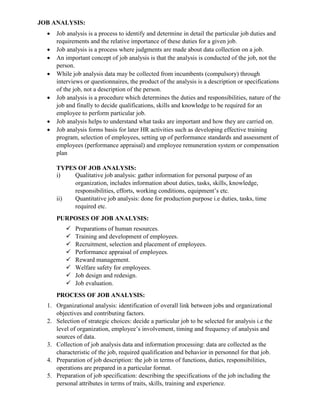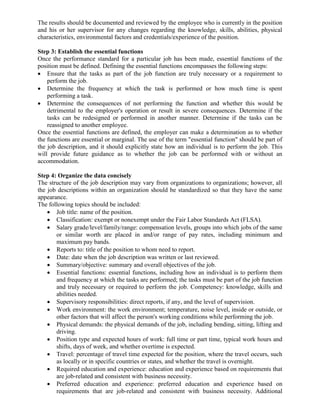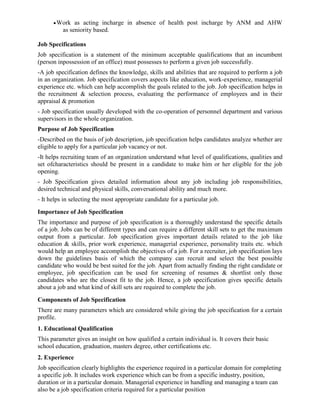The document provides information on job analysis including its definition, purposes, types, process, data collection methods and the components of an effective job description. Job analysis is defined as a process to identify and determine the duties, requirements and importance of different job aspects. It helps in various human resource activities like training, selection, performance appraisal etc. The key steps in developing an effective job description are conducting a job analysis, establishing essential functions, organizing the data, writing a summary statement and adding required signatures.














